Down The Rabbit Hole
 I take it WILD, my “nature cocktail,” with a slice of Rugged and a pinch of Barely Accessible, straight up. Never could stay on a path, unless it’s one the deer have mashed out with their cloven-hoof comings and goings.
I take it WILD, my “nature cocktail,” with a slice of Rugged and a pinch of Barely Accessible, straight up. Never could stay on a path, unless it’s one the deer have mashed out with their cloven-hoof comings and goings.
Oh, I still whine about the ticks, the thorns, the burrs speckling my khakis, but secretly – I like it.
Those lesions and adhesions symbolize, for me, an initiation rite… When I’m brave enough to bare my back to Nature’s slicing and sunburn, a “wall” seems to open, revealing a hidden world.
It’s as though I’ve been accepted into an exclusive community bustling with animals, birds, insects, all going about their business as though humans were merely a mild curiosity, nothing to mind.
It’s an Alice in the Rabbit Hole experience, something you can’t plan for. But if willing to take the dive, the glorious “Unknowing” is wilder than dreams.
Here are a few pics from some of my excursions into Nature’s Wonderland. I know your experiences are equally wonderful… please share them with me!
The Wonder of Water
It was some serious rain.
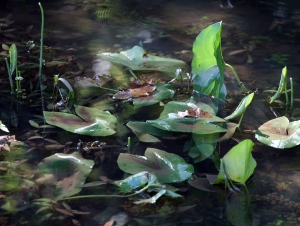 6-8” between that 5 a.m. clap of thunder that jerked the neighborhood awake and the silent, swift-rising chimera of cloud that enveloped us eerily around midnight. Cars crashed. Streets flooded. Stretches of interstate were closed for hours. I swear, within the first four hours, brown yards greened.
6-8” between that 5 a.m. clap of thunder that jerked the neighborhood awake and the silent, swift-rising chimera of cloud that enveloped us eerily around midnight. Cars crashed. Streets flooded. Stretches of interstate were closed for hours. I swear, within the first four hours, brown yards greened.
The air smelled clean at first, then of fish and frogs and wet dogs. The hum of air conditioners in the cul-de-sac stilled. It was the promise of autumn, spilled out on the first day of September following a fly-swatting, high-tempered, drought-laden August experience.
WATER. Finally, and enough.
By next morning it seemed every living thing was in better humor. As e.e.cummings wrote, the world was “mud-licious and puddle-wonderful.” There was nothing better to be done than to head for Anne’s Lake and see how happy the ducks and dragonflies had become overnight…
The fog was thick and phantom-like, swirling around the ankles of willows and sucking up whole geese, magician-style. Mallards vacuumed the shoreline, gorging on insects the wind blew in. Damselflies participated in open-air orgies, as a red-tailed hawk eyed it all with detached superiority from atop a diseased oak. All of this activity, commotion arose from the weepy fits of a few angry clouds! Marvelous, the power of water!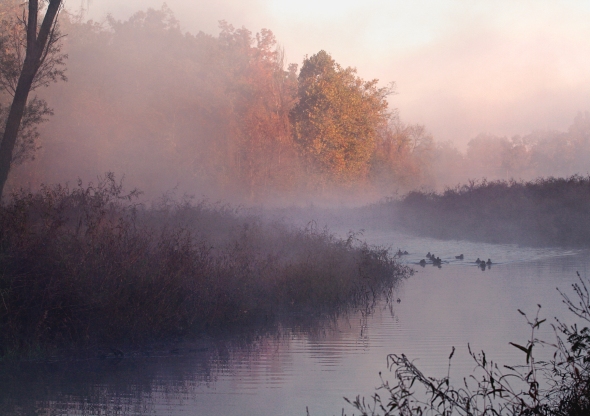
THINK of it, what water can do!
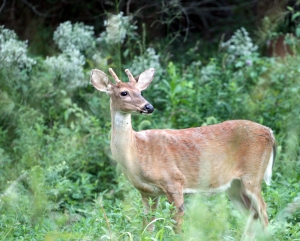 We all know that the 277 river-miles of the Grand Canyon was carved by water. Solid rock! Carved from fluid but persistent water! At it’s deepest, the canyon is 6000 feet from canyon rim to river bottom, 10 miles across at its widest. A raft trip through it can take 2 weeks, a hike to the bottom and back 2-3 days.
We all know that the 277 river-miles of the Grand Canyon was carved by water. Solid rock! Carved from fluid but persistent water! At it’s deepest, the canyon is 6000 feet from canyon rim to river bottom, 10 miles across at its widest. A raft trip through it can take 2 weeks, a hike to the bottom and back 2-3 days.
Water (or lack thereof) has forced many plant and animal species to evolve a compensatory set of skills to survive. Take, for instance, the camel. Rather than the circular red blood cells that all other mammals have, it has oval cells that assists flow in a dehydrated condition. When camels exhale, water vapor is trapped by their nostrils and returned to their bodies. Their kidneys retain water so efficiently that a camel’s defecation is so dry it’s often used as fire-starter.
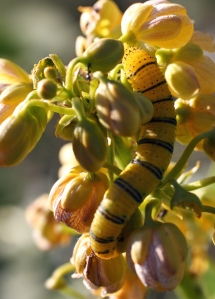 And how less wonderful would this world be without creatures who make water their home? Consider the sea turtles who start out biting and clawing their way through their shells, dig furiously through a foot of sand to reach the surface, navigate to the sea by moonlight and swim continuously for days to reach deeper, safer waters, fueled solely by their own egg yolk residuals!
And how less wonderful would this world be without creatures who make water their home? Consider the sea turtles who start out biting and clawing their way through their shells, dig furiously through a foot of sand to reach the surface, navigate to the sea by moonlight and swim continuously for days to reach deeper, safer waters, fueled solely by their own egg yolk residuals!
Think of the role the ocean plays in the phenomenon of the advancing carpet of red crabs on Christmas Island in the Indian Ocean. Each fall the red crabs, 120 million strong, migrate across highways, schoolyards, parking lots and a golf course to the sea to spawn. This blanket of red bodies is so dense that it can be seen from airplanes. Locals shovel them from their sidewalks and adjust their daily lives to accommodate them. Take, for instance, the die-hard golfers on the island’s single course who have adopted the rule that the crabs “belong to the game…” meaning if a crab manages to push a golf ball into a hole, it counts as IN.
Masaru Emoto is a Japanese author known for his work called “Messages From Water,” in which he claims — and aims to show through microscopic photography — that human thoughts directed at water droplets before freezing affect the water crystals in the frozen state. His research strives to show that positive thoughts (whether through prayer, words of intent or music) produce “beautiful” crystals, whereas negative ones produce “ugly,” misshapen ones. The inference is that water has a secret life of its own and that it can absorb and transmit human emotions. He conjectures that this can be utilized for its curative properties in ways never before imagined. Emoto does, of course, have his critics in the scientific world, and it doesn’t aid his credibility that he sells products based on his “findings.” So far, however, his experiments (to my knowledge) haven’t been DISproven. If you watched the wildly popular and highly controversial video “The Secret,” you saw similar experiments and outcomes.
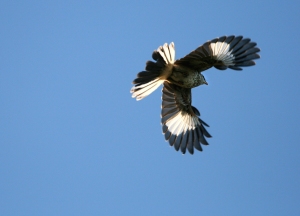 If, indeed, his experiments (and many similar ones conducted by scientists since) are conclusive and support his hypothesis, the ensuing question begs an answer: does water hold the key to many scientific and spiritual mysteries? Is it a bigger piece in the God-puzzle than we ever imagined?
If, indeed, his experiments (and many similar ones conducted by scientists since) are conclusive and support his hypothesis, the ensuing question begs an answer: does water hold the key to many scientific and spiritual mysteries? Is it a bigger piece in the God-puzzle than we ever imagined?
Of course, “everything old is new again,” and if you were to describe these “new” findings to an Native American elder, you’d likely receive a slow, knowing smile. Maybe we’ll discuss these issues again later. For now, I’m just content to sit and gaze on the dozens of little rivulets parting over stones and twigs in the stream, lose myself in the way it catches the light, throws itself over rocks in a suicidal manner, then recovers at the bottom to flow, seemingly uninterrupted and completely at peace, onward.
In the words of Rumi, “the wonder of water moving over that rock justifies existence.”
What The Fawn Told Me
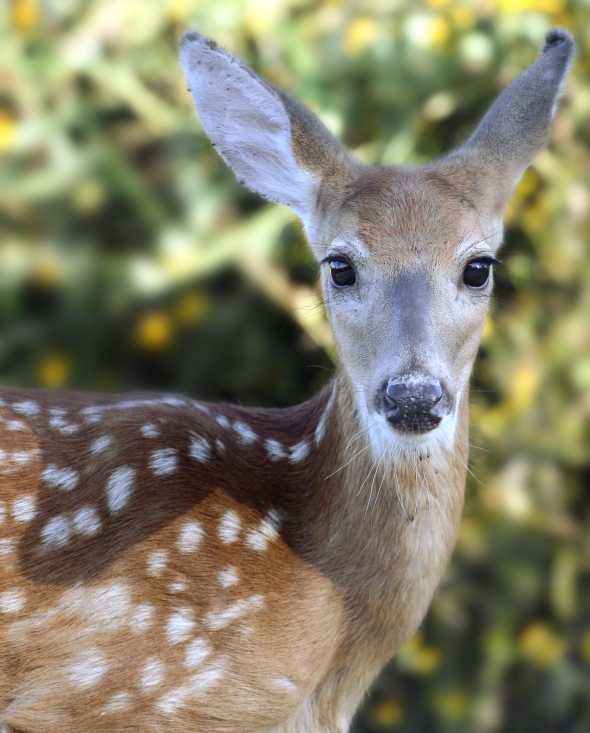 “You don’t scare me, Human. Only a little, but I’m young and lithe, all muscle and sinew and curiosity. Yes, my pink mouth does occasionally grope for my mother’s milk, but see how aptly I crunch away at summer flowers gone to seed!
“You don’t scare me, Human. Only a little, but I’m young and lithe, all muscle and sinew and curiosity. Yes, my pink mouth does occasionally grope for my mother’s milk, but see how aptly I crunch away at summer flowers gone to seed!
 “I can see, as I poke my head (consisting mostly of eyes and lashes) out from this shield of thistle, that I’m nearly killing you with delight. I know my power.
“I can see, as I poke my head (consisting mostly of eyes and lashes) out from this shield of thistle, that I’m nearly killing you with delight. I know my power.
“Don’t let these fading spots mislead you, Human. I’m not naive. I’ve listened to the gathering herd’s rumblings, the rumors of Warm leaving for a long while, but always returning…how blackberries and ripe persimmons disappear, leaving the stomach empty and the landscape void of its sheltering green walls. But I’m not afraid.
“One day soon, I’ll command my clumsy, lanky legs. They’ll have become strong and sure, easily leaping a 6 foot fence from a standing position, 10 if I get a running start. My large, veined ears will turn 180 degrees and tremble at the howl of the coyote, and my nose will sniff out an acorn buried beneath inches of snow. I have superior instincts. Already I can distinguish Safety from all that it’s not. Did you know my antlers can grow more than 1/2 inch per day?
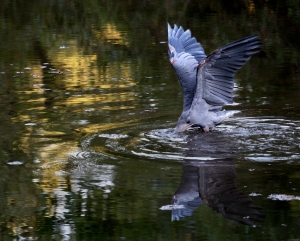 “By this time next year, I may have come nose to nose with the smoking arms of metal that smell of sulphur. I may have seen death by then, have smelled the bones of one of my own. I’m told how the honied light on the lake dims and grays, how the water becomes crunchy and harder to swallow, but I’m prepared.
“By this time next year, I may have come nose to nose with the smoking arms of metal that smell of sulphur. I may have seen death by then, have smelled the bones of one of my own. I’m told how the honied light on the lake dims and grays, how the water becomes crunchy and harder to swallow, but I’m prepared.
See here? I practice my snorts and stomps, learn to interpret shadow and rustles. Even now, my cloven hooves can trot across fallen twigs without causing a single snap.
“I can tell you fear for me, Strange Empathic Being, but you needn’t worry. I’m in training now, and there’s no going back. If you visit me again when Winter’s white palm has turned over to reveal the brown knuckles of Spring, you’ll find me wiser and more skilled, having practiced Living in the dark.
“I trust the Good Mother’s promise to return the light, the warmth, the abundance when I most need it. Do you?
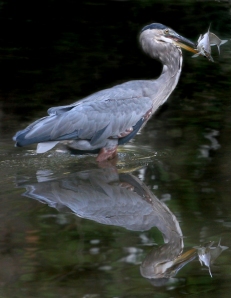 “There comes a renewal, Human, a restoring, A Giving Back and then some of all we thought was taken. It happens whether or not you think you deserve it, and whether you believe it or not, though believing makes the waiting easier.
“There comes a renewal, Human, a restoring, A Giving Back and then some of all we thought was taken. It happens whether or not you think you deserve it, and whether you believe it or not, though believing makes the waiting easier.
“If you Humans can entrust me, and those like me, to the care of the Season-Changer, can you not entrust your children, your lover, your friends…
perhaps, even…
...yourself?”
Making Scents of Things
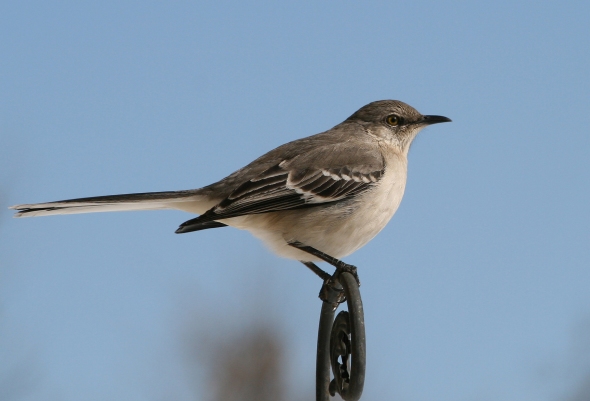 Stepped outside this morning and smelled autumn in the air. Not the recognizable smells of burning leaves, pumpkins rotting on the vine, baskets of mums or ripe apples in the orchard…something indefinable, but palpable.
Stepped outside this morning and smelled autumn in the air. Not the recognizable smells of burning leaves, pumpkins rotting on the vine, baskets of mums or ripe apples in the orchard…something indefinable, but palpable.
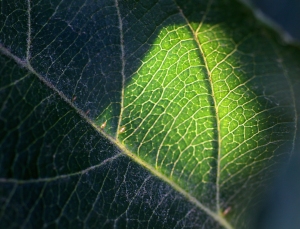 My grandmother had no sense of smell. We all had our laughs when we’d bring her handfuls of silk flowers in a bud vase and she’d sniff them instinctively, put water in the vase and stick it in her windowsill so the flowers could “get some sun.” The laughter died, however, when we realized that Grandma LolaMae couldn’t detect when something was burning on the stove or when the milk in the fridge had gone sour. In those moments, the value of the sensory cells of the nasal cavity became very apparent.
My grandmother had no sense of smell. We all had our laughs when we’d bring her handfuls of silk flowers in a bud vase and she’d sniff them instinctively, put water in the vase and stick it in her windowsill so the flowers could “get some sun.” The laughter died, however, when we realized that Grandma LolaMae couldn’t detect when something was burning on the stove or when the milk in the fridge had gone sour. In those moments, the value of the sensory cells of the nasal cavity became very apparent.
Olfaction (smell) is basically our ability to identify something by breathing in the odor produced when microscopic amounts of a substance evaporate. In nature, this is a vital survival tool, thus most vertebrates have more olfactory nerve cells than do humans. It’s interesting to see how this plays out…for instance, mule deer have scent glands on their hind legs, near the hooves, so fawns can sniff them and recognize their moms. On the roof of snakes’ mouths are receptors that smell and taste the pheromones that their forked tongues collect. Zoos in the U.K. discovered, in 1994, that when their keepers wore perfume or aftershave, it often started a sexual riot in the big cat and monkey exhibits! This was traced back to the use in commercial scents of an animal extract called civet and a simulated version of deer musk: scents animals use to signal attraction to one another. Because of the surge in lasciviousness these scents evoked, the Basildon zoo was forced to post this request to zoo-goers: “Would any visitors wearing strong perfume or aftershave please stand well back from the animals.” Well, YEAH!
In humans, scents are often closely tied to individual memories….for instance, for me the smell of freshly tilled soil evokes
 recall of the mounds of gladiolas my mother used to plant…row after row of black Illinois dirt turned and patted, pitted for a bulb to be placed. In summer, an extavagant display of stiff stalks emerged like colorful soldiers standing at attention, decked in multi-hued uniforms. I liked the glads because they were ABUST with blooms, sprouting out all over as though the stalks had sprung leaks, too much color built up for the stems to retain without spewing them forth from every vein.
recall of the mounds of gladiolas my mother used to plant…row after row of black Illinois dirt turned and patted, pitted for a bulb to be placed. In summer, an extavagant display of stiff stalks emerged like colorful soldiers standing at attention, decked in multi-hued uniforms. I liked the glads because they were ABUST with blooms, sprouting out all over as though the stalks had sprung leaks, too much color built up for the stems to retain without spewing them forth from every vein.
The smell of muddy water sends me back to a spring when the rural road I lived on flooded, washing corn fields over it. My brother Tim and I delightfully participated in the surrealistic and unusual event of “swimming in the streets.” I can’t smell a mud puddle without time-traveling back to that.
Words seem to conjure generic mental images, whereas scents evoke highly event-specific, intimate visuals. Try this experiment: When I say “ocean,” does your brain con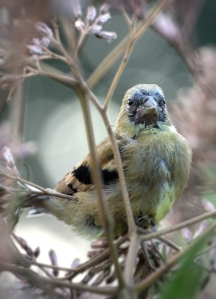 jure a generic ocean scene? It’s likely. But if I say “the SMELL of the ocean,” you’re likely transported to a particular day on a particular shore when in a particular moment you breathed deep and were acutely aware of the salt brine in the warm breeze, the smell of ancient waters, fishy nets, the rust and wet wood of planks and piers, the coconut scent of suntan lotion.
jure a generic ocean scene? It’s likely. But if I say “the SMELL of the ocean,” you’re likely transported to a particular day on a particular shore when in a particular moment you breathed deep and were acutely aware of the salt brine in the warm breeze, the smell of ancient waters, fishy nets, the rust and wet wood of planks and piers, the coconut scent of suntan lotion.
Breathing in the autumn smells this morning, I recalled an idea I’m fond of that I once read in Diane Ackerman’s book, A Natural History of the Senses. She writes: “Etymologically speaking, a breath is not neutral or bland – it’s cooked air; we live in a constant simmering. There is a furnace in our cells, and when we breathe we pass the world through our bodies, brew it lightly, and turn it loose again, gently altered for having known us.”
I wondered this morning, as I stepped out and took a big whiff of autumn, what and who I was breathing in….the cells of dead ancestors, the bones of expired animals, the microbial remains of trees from ancient forests? How does it change me, this molecular cauldron of scent and cells? How do I alter it, as I boomerang it forth to the world? Is it affected only by science, or by that magical mixture of science and Spirit? I may be unlearned, still I think I know…
JUST FOR FUN:
Here are some “smells” that are certain to evoke a strong reaction, maybe even a memory or two…Let your brain play with each of these for a moment!
Lasagna, hot out of the oven…Magic Marker…Chlorinated Pool…Puppy breath…Pine Forest….
Nail Polish…A new book…Starbucks…Road kill…Sex and Sweat…Singed hair…
 Top of a baby’s head…New box of crayons…Fresh-baked bread…Play-Doh…
Top of a baby’s head…New box of crayons…Fresh-baked bread…Play-Doh…
New plastic shower curtain…Lilac bush…Campfire…New car smell…Patchouli or Sandalwood…
Vicks Vaporub…Pink school erasers…Leather…Firecracker that’s just exploded…
Cigars…Clove cigarettes…Gasoline…Jasmine or Plumeria…
What are some of YOUR emotion or memory-evoking scents? Feel free to start a dialogue!
Field Notes
St. Francis said it first, and best:
“Such love does the sky now pour, that whenever I stand in a field, I have to wring out the light when I get home.”
That’s what this blog is all about: the light-wringing I do when I get home from the fields with my camera full of recorded moments and my mind still saturated in Nature-Love… and not just for the obviously beautiful parts of nature, but the terrifying, the savage, the predatory, since without the “dark,” the “light” has no definition. All is part of the fullness, the sphere, the web of what we call The Universe, necessary and beneficial. I appreciate it all, and count it a privelege to witness and record it.
Like the poet Mary Oliver, I believe that “My work is loving the world.” In part of her poem “Messenger,” she reminds herself to:
“…keep my mind on what matters, which is my work, which is mostly standing still
and learning to be astonished.
The phoebe, the delphinium. The sheep in the pasture, and the pasture.
Which is mostly rejoicing, since all the ingredients are here,
which is gratitude, to be given a heart and a mind
and these body-clothes,
a mouth with which to give shouts of joy
to the moth and the wren, to the sleepy dug-up clam,
telling them all, over and over, how it is
that we live forever.” *
If we spend much time in the fields, in the mountains, in the forests or by the seas, we soon comprehend the interconnectedness of all living things. We start to walk more softly… we start to accept, even appreciate, the polarity inherent in all beings, including those of the human kind. We cultivate more joy. Worry less. Re-learn how to play and pray. Nature has a way of softening us, out here in the “Light Fields.”
This blog, then, is my invitation to you. JOIN ME. Let’s explore nature together with the wide-eyed curiosity and open heart of a little child. Ready? Yes? Well then, as Rumi said,
“Out beyond ideas of wrong-doing or right-doing, there is a field…..I’ll meet you there.”
* Source: Poem “Messenger,” from the book Thirst by Pulitzer Prize-winner Mary Oliver, 2006 Beacon Press




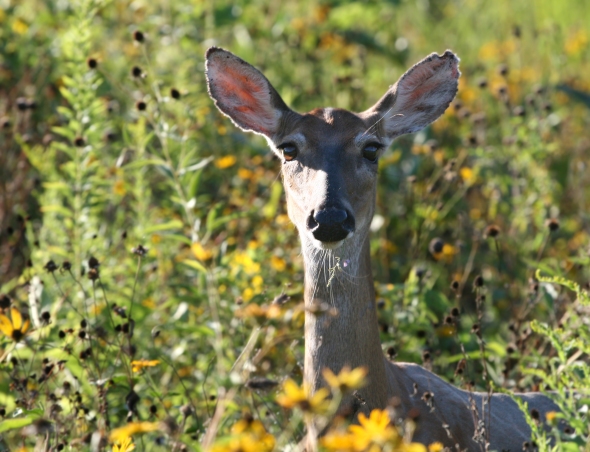




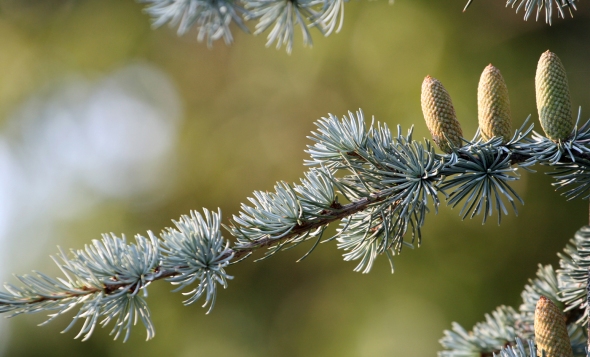
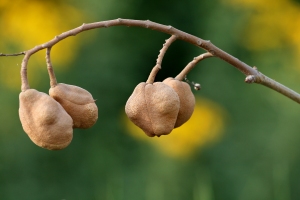
Recent Comments